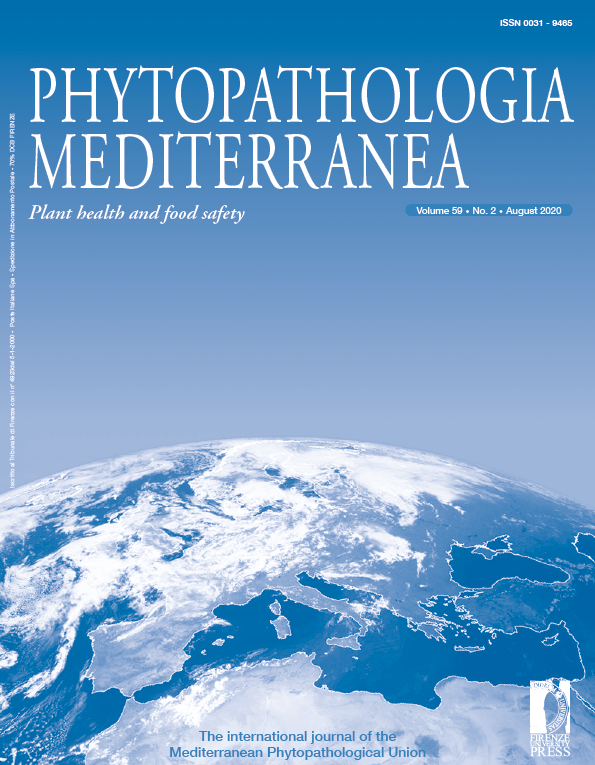Increasing diversity of resistance breaking pepper strains of Tomato spotted wilt virus in the Mediterranean region
Published 2020-09-06
Keywords
- TSWV,
- Capsicum annuum,
- phylogenetic analysis
How to Cite
Abstract
Tomato spotted wilt virus (TSWV) is an important plant pathogen, causing economic impacts on crop production, especially in vegetable crops, including pepper. Resistance breeding is the most effective technique to manage TSWV epidemics. In pepper, the Tsw resistance gene is used. However, rapid emergence of resistance breaking (RB) strains of TSWV has hampered the control of TSWV. RB strains have previously shown clear geographic distribution that parallel each similar wild type (WT) strain. The present study collected pepper-infecting RB TSWV strains in limited districts of Spain and Turkey, and these strains clustered to two main clades based on the NSs protein amino acid sequences. Results verified the coexistence of the different strains in both countries. On the basis of amino acid sequence comparison of the collected isolates, common alteration responsible for resistance breaking was not identified in accordance with the preceding observations. These results emphasize the increasing diversity of the RB TSWV strains.







